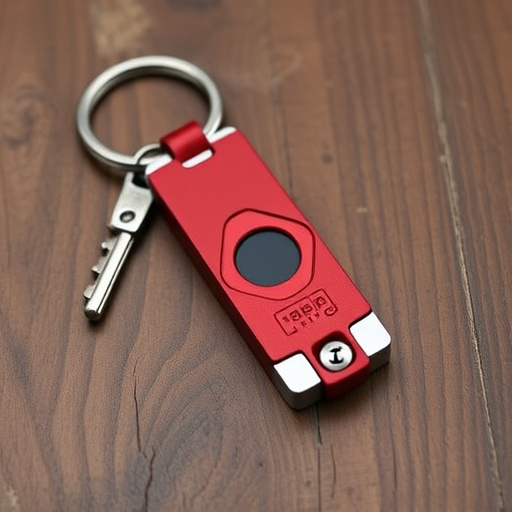Discreet Personal Protection Keychain Tools provide a stylish and practical solution for on-the-go safety, offering features like sharp blades, pepper spray, or alarms in compact casings. Their legal compliance is vital, as global regulatory bodies balance self-defense rights with public safety through age limits, permit systems, and acceptable defense mechanisms. Users should check regional regulations regarding size, functionality, and safety standards to ensure the tools meet industry and legal guidelines, offering both protection and legality.
- Understanding Discreet Personal Protection Keychain Tools
- Legal Landscape: Regulations Governing Keychain Devices
- Ensuring Compliance: What to Look Out For
- Benefits and Limitations: Weighing the Options
Understanding Discreet Personal Protection Keychain Tools
Discreet personal protection keychain tools have gained popularity as a means of self-defense for individuals seeking to enhance their safety while on the go. These compact and stylish devices are designed to fit comfortably on a keychain, making them easily portable and accessible. They offer a subtle yet powerful way to deter potential attackers, providing users with peace of mind in various settings.
These tools often incorporate features like sharp blades, pepper spray, or alarm mechanisms, all housed within a sleek and discreet casing. Their small size allows for easy carriage without drawing unnecessary attention, ensuring that personal safety becomes an effortless priority. This innovative approach to self-defense has made such keychain devices a preferred choice for individuals who value both fashion and functionality in their protective gear.
Legal Landscape: Regulations Governing Keychain Devices
In the realm of personal safety, discreet protection has become a growing focus for individuals seeking innovative solutions. One such device gaining traction is the Discreet Personal Protection Keychain Tool—a compact and unassuming accessory that packs a punch when it comes to self-defense. As these tiny tools become more prevalent, understanding their legal landscape is crucial for both consumers and manufacturers.
Regulatory bodies worldwide are tasked with ensuring the safety and legality of such devices, often implementing specific rules and restrictions. These regulations vary significantly from country to country, and even within regions, as local laws take precedence. Key factors in these regulations include age restrictions, permit requirements, and permissible defense mechanisms, all designed to maintain a balance between personal protection and public safety.
Ensuring Compliance: What to Look Out For
Ensuring compliance with legal requirements for discreet personal protection keychain tools is paramount to maintaining both effectiveness and legality. When assessing such devices, keep an eye out for specific regulations related to size, functionality, and materials used. For instance, some regions have restrictions on the type of protective elements integrated into keychains, focusing on preventing injuries or damage rather than as weapons. Additionally, the overall design should adhere to safety standards, ensuring that sharp edges or potential hazards are minimized, especially in public spaces where these tools might be utilized.
Manufacturers often provide detailed information regarding compliance and certifications on their products. Look for labels indicating adherence to relevant industry standards or legal guidelines specific to your region. This transparency ensures that the keychain tool not only offers discreet personal protection but also operates within a defined legal framework, offering peace of mind for users concerned about both safety and legality.
Benefits and Limitations: Weighing the Options
Discreet personal protection keychain tools offer a unique blend of benefits and limitations that potential users should consider before making a purchase. One of the primary advantages is their inherent discreteness, allowing individuals to carry self-defense mechanisms in a compact and unassuming manner. These tools can fit easily onto keychains, making them readily accessible for immediate use when needed. They provide a sense of security, empowering users with the ability to defend themselves in various situations without drawing undue attention.
However, limitations exist. The effectiveness of these devices often relies on the user’s skill and the specific tool’s design, which may not always ensure reliable performance during an emergency. Additionally, legal considerations vary across regions, and some areas may have restrictions or age requirements for carrying certain types of personal protection devices, including keychains. It’s crucial to research local laws to avoid any legal complications. Weighing these factors helps individuals make informed decisions when choosing discreet personal protection keychain tools that best suit their needs while adhering to legal guidelines.
When considering the adoption of Discreet Personal Protection Keychain Tools, it’s crucial to balance their benefits with legal constraints. By understanding the regulatory landscape and ensuring compliance with relevant requirements, users can harness these innovative devices’ potential while navigating the legal framework surrounding them. This comprehensive guide offers a starting point for staying informed and protected in today’s diverse market.
